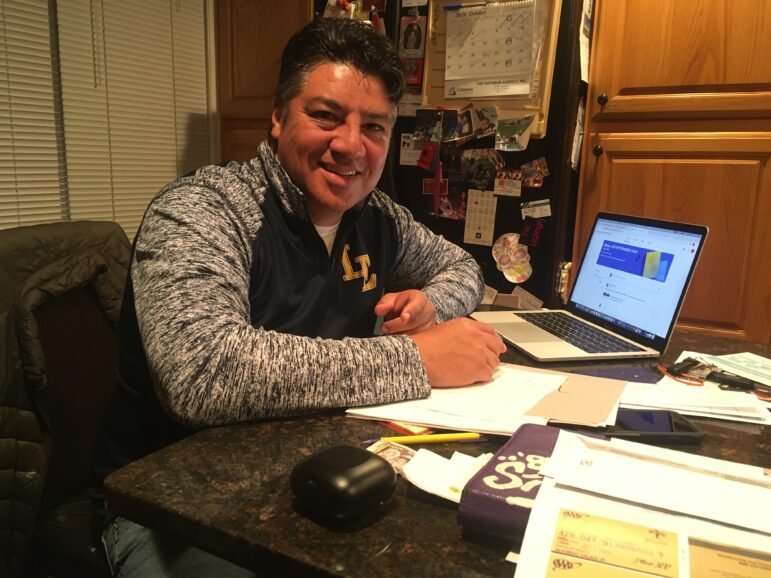
Courtesy of Alfonso Salais
Eastern High School Spanish teacher Alfonso Salais working in his home.“I don’t know what we’re doing!” “I don’t know what you’re saying!”
These are the types of concerning messages Eastern High School Spanish teacher Alfonso Salais said he frequently receives from his students via Google Classroom.
Teaching a language online is “something different,” Salais said. “Overwhelming.”
His students range in grade from seventh to 12th. And every one, he says, is unique. They could be in a place where they’ve never used technology before, or where they have very limited access to internet connection and have issues using their school district administered device.
They could be an auditory and musical learner, a visual and spatial learner, a verbal learner, a logical and mathematical learner, a physical and kinesthetic learner, a social and interpersonal learner or a solitary and intrapersonal learner.
They could be in an unstable learning environment with a lot of background activity that might divert what would be typical, comfortable attention that comes with classroom atmospheres.
The variety of student life Salais works with means that he has to keep up. He has to find new ways to ensure his students are engaged and absorbing his lessons.
“The students are so used to social media where they can flip to a new post if they get bored,” Salais said. “They can scroll your screen at any time, so my thought is always, ‘What can I do to make this more interesting than Tiktok or Instagram, even Facebook?’”
He knows he has to make that time worth it.
“With Spanish, I’m so used to seeing the students pronounce the words. As you learn a language, you have to pronounce the words, the syllables and the accents,” Salais said. “As a teacher, you have to see which students are participating. When you have them all simultaneously speaking, you can look around the room and gauge an informal assessment of who’s doing what. There’s also group activities, partner activities and activities where students can roam around the room and ask each other questions that we can’t do now, but really do help a lot.”
Salais is a Central Michigan University graduate, as is his wife Mindy Salais, who is a history teacher at Eastern High School.
When the couple started their careers 26 years ago, the pedagogy was simple, he said. Now, the Salais’ family has to relearn how to teach and learn.
They’re also sharing the positive techniques they find with their colleagues at Eastern High School, hoping to reduce the amount of depression, anxiety and stress students may be facing behind the screen.
“We’re on Google Classroom. It’s not like Zoom where I can control your side,” Salais said. “What am I supposed to do if a kid shares their screen randomly? The first week of school, I had one who unmuted himself and yelled out ‘What up, (expletive)?!’ I had to email his mother and the principal, and sit down to talk with him — I reminded him, if he has these types of strong tendencies and likes to act on them just for fun, that the Google Classroom is technically in my living room. I correlated it to as if he were to open my front door and do the same thing.”
Salais wants his classroom, whether virtual or in-person, to feel as safe as possible for all of his students.
For Eastern High School, the virtual semester began after Labor Day weekend and is expected to last at least through the start of November.